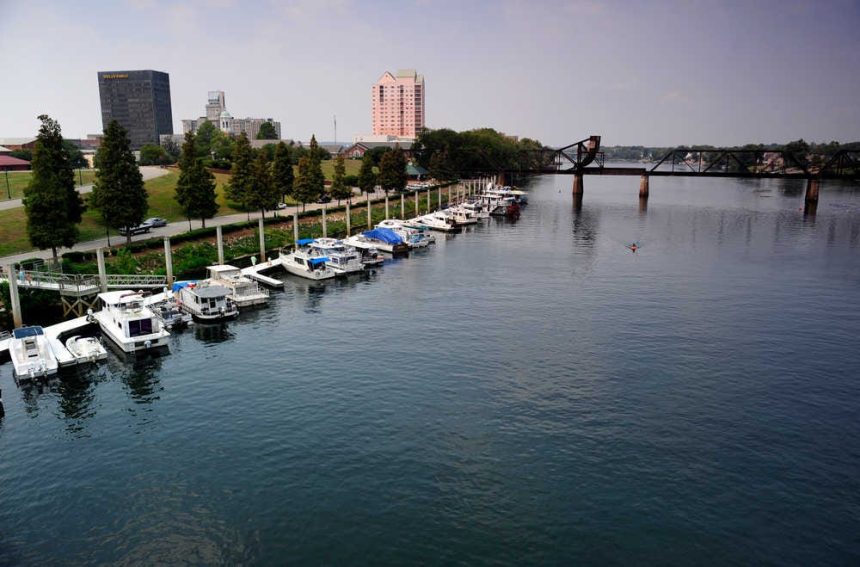Symptoms of climate change, like heavy rainfall and drought, are affecting surface water quality in Georgia.
Georgia’s main source of water comes from surface water sources like streams, rivers, reservoirs, and groundwater aquifers, according to experts with the University of Georgia Extension.
“With climate change, we’re getting more extreme rainfall,” said Sarah Ledford, associate professor in the Department of Geosciences at Georgia State University. “Extreme rainfall is going to increase the amount of materials that are coming over the surface into the river. When it rains really hard, you’re going to have sediment, fertilizer, and manure running off from farms.”
Georgia has about 70,000 miles of rivers, 425,000 acres of lakes, and 4,500,000 acres of freshwater wetlands, according to UGA Extension.
Sarah Ledford, associate professor, in the Department of Geosciences at Georgia State University.
“This means that heavy rainfall will pick up the grease from cars and material on the roads that’s coming from our urban environments,” said Ledford. “So extreme rainfall is always going to increase the amount of that runoff and the amount of pollution in that runoff that’s reaching the streams and rivers.”
Ledford said heavy rainfall is just one symptom of climate change affecting the water supply.
“On the flip side of climate change, we have the more extreme droughts,” she said. “The drier periods impact water quality a little bit differently. It impacts the way that we allow treated water to leave, say, wastewater treatment plants. The way that’s calculated is a little bit based on the idea that the solution to pollution is dilution. The government looks at those low flow levels and figures out how much capacity the stream or lake has to dilute the pollutant.
“As droughts get worse, sometimes those calculations aren’t right anymore,” she continued. “It gets drier. There’s less water than you would anticipate. So there tends to be a bigger source of pollution during the drier impacts of climate change. Both ends of climate change are impacting the quality of the water.”
August is National Water Quality Month, a time to highlight the importance of water sources for humans and wildlife.
Ledford said there is something that can be done to help mitigate the amount of runoff into bodies of water.
“One thing that potentially can be done is if you own land next to a stream or river of any size, keeping a riparian buffer in place is great,” said Ledford. “A riparian buffer is that section of land between the stream as you move uphill. The more you can keep that forested, keep that as a wetland, you have tree roots helping intercept some of that material from getting into the stream or river. So, making sure you have intact riparian buffers or riparian zones is a huge benefit to streams and rivers.”
Do you want to eat gruel? See how climate change is impacting honeybees and taste buds
Types of vegetation suitable for a riparian buffer, according to the United States Department of Agriculture:
-
Trees, with their deep root systems, help stabilize stream banks and provide shade.
-
Shrubs can filter pollutants and provide habitat for wildlife.
-
Grasses help to slow down water runoff and absorb pollutants.
Additional benefits of a riparian buffer, according to the New York State Department of Environmental Conservation:
-
Provide habitat for a variety of wildlife, including birds, mammals, amphibians, and insects.
-
The vegetation offers food, shelter, and nesting sites.
-
The buffer can act as a corridor connecting different habitats.
-
Trees provide shade, regulating water temperature in streams and rivers, benefiting fish and other aquatic life.
This reporting content is supported by a partnership with several funders and Journalism Funding Partners.
Erica Van Buren is the climate change reporter for The Augusta Chronicle, part of the USA TODAY Network. Connect with her at EVanBuren@gannett.com or on X: @EricaVanBuren32.
This article originally appeared on Augusta Chronicle: See how climate change is impacting water quality in Georgia








